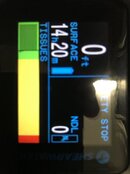Doctor Rig
Contributor
Is there any practical use for the “Tissues Graph“ on the Perdix. I’ve casually looked at it during surface intervals, but wonder if anyone has any experience or recommendations for its use. (There is a 2012 YouTube video that has some info, but it‘s dated.)




